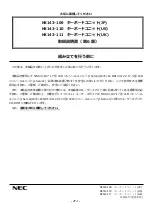
Hall Effect Keyboard – Fall 2016
Designed with all the love in the world in Austin, Texas, USA.
Hand built in Guangzhou, China.
A note from XMIT:
Thank you so very much for your support of the first group buy of the Hall Effect Keyboard by XMIT Keyboards!
For XMIT, finding a usable Hall Effect keyboard has been something of a holy grail for almost ten years now.
It’s been such an adventure to learn about all the different kinds of keyboards made in the past 30 years to be
able to bring this keyboard to you.
XMIT Keyboards is a tiny outfit in the Austin, TX area working to bring these keyboards to life. With your
continued support, we’ll see the designs continue to evolve.
I didn’t make this possible, you did!
J
--XMIT
INTRODUCTION
You hold in your hands the most reliable keyboard you will ever own.
What is a Hall Effect keyboard? In short, it is a mechanical keyboard with key switches that detect the position
of a magnet. These switches are rated to 100 million cycles.
Most other keyboards on the market today use either a rubber dome and membranes, a physical switch, or in
some cases, a capacitance sensor, to detect key position. These designs are simple, and effective, but suffer
from a shorter working life, and poor performance in dirty or wet conditions.
Hall Effect keyboards were popular in the 1970s, and are still popular today in mission critical applications
where switches must not fail (think: nuclear reactors, spacecraft, missile silos). They fell out of favor due to
cost reasons. Now, with inexpensive surface mounted Hall sensors readily available, it is possible to re-
introduce this design to the market!
For more background, please see:
https://en.wikipedia.org/wiki/Hall_effect
.

























